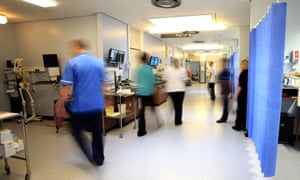Richard P. Shannon, MD
general number 434.924.2946 and demand to know what the RESULTS are; tPA efficacy, 30 day deaths, 100% recovery, rehab protocol efficacy.Big f*cking whoopee.
You can check out Joint
Commission standards here:
I saw absolutely
nothing about what should be done the first week or anything about measuring
30-day deaths and 100% recovery. God, these people are worse than
worthless. Complacent good-for-nothings.The puffery article here:
http://www.newsplex.com/content/news/UVA-Stroke-Center-earns-national-certification-442258443.html
CHARLOTTESVILLE, Va. (NEWSPLEX) -- The Stroke Center at the University of Virginia Health System has been certified as a Comprehensive Stroke Center.
According to a release, the certification comes from the Joint Commission, an accrediting group for hospitals that works with the American Heart Association and the American Stroke Association.
The UVA Stroke Center is one of just three in Virginia to earn the national certification, which follows a site visit by surveyors measuring how well the center complies with stroke care standards and using evidence-based guidelines to provide care.
The release says about three percent of hospitals across the country earn this certification.
"This is a tremendous honor for our Stroke Center physicians and team that highlights their dedication to providing excellent care whenever it is needed, using the most advanced procedures and imaging," said Pamela M. Sutton-Wallace, the CEO of the UVA Health System.
According to the release, the services available at a Comprehensive Stroke Center include a dedicated intensive care unit that is staffed around the clock, care for patients with strokes caused by blocked blood vessels in the brain and by brain bleeding, advanced imaging to help with diagnosis, quick delivery of intravenous tissue plasminogen activator or tPA that is used to break up clots, and advanced surgical procedures such as coiling and clipping to treat aneurysms that may cause strokes due to bleeding in the brain.
Such centers can also help coordinate care for patients after they are discharged from the hospital and conduct research to help improve care for stroke patients.
According to a release, the certification comes from the Joint Commission, an accrediting group for hospitals that works with the American Heart Association and the American Stroke Association.
The UVA Stroke Center is one of just three in Virginia to earn the national certification, which follows a site visit by surveyors measuring how well the center complies with stroke care standards and using evidence-based guidelines to provide care.
The release says about three percent of hospitals across the country earn this certification.
"This is a tremendous honor for our Stroke Center physicians and team that highlights their dedication to providing excellent care whenever it is needed, using the most advanced procedures and imaging," said Pamela M. Sutton-Wallace, the CEO of the UVA Health System.
According to the release, the services available at a Comprehensive Stroke Center include a dedicated intensive care unit that is staffed around the clock, care for patients with strokes caused by blocked blood vessels in the brain and by brain bleeding, advanced imaging to help with diagnosis, quick delivery of intravenous tissue plasminogen activator or tPA that is used to break up clots, and advanced surgical procedures such as coiling and clipping to treat aneurysms that may cause strokes due to bleeding in the brain.
Such centers can also help coordinate care for patients after they are discharged from the hospital and conduct research to help improve care for stroke patients.

